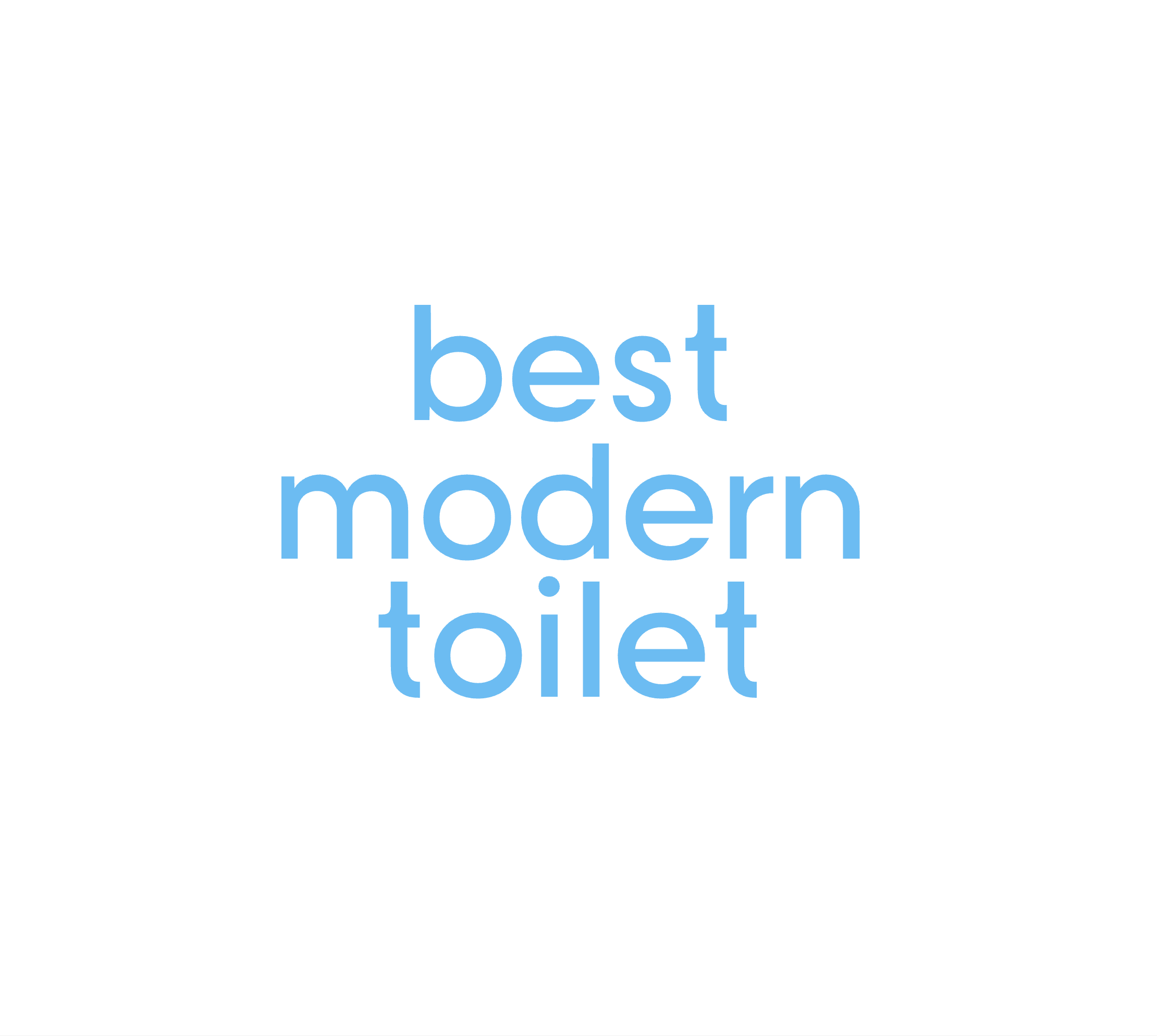Reviews
Top Shallow Depth Toilets for Compact Bathrooms
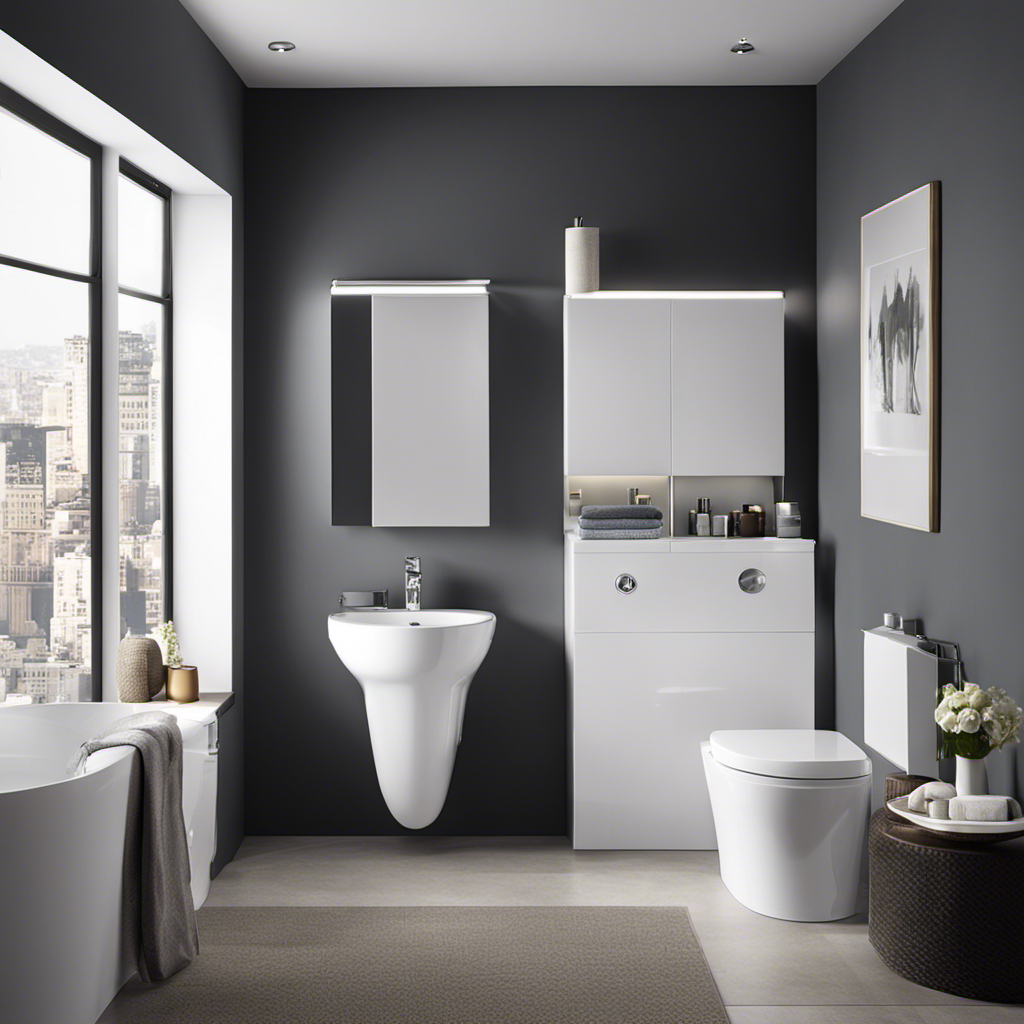
Looking to maximize space in a compact bathroom? Look no further! This article highlights the top shallow depth toilets that are perfect for small spaces.
With features like efficient flushing, water conservation, and stylish designs, these toilets are a game-changer.
The Galba Mini Commode takes the crown with its dual siphonic flush and comfort height.
For those on a budget, the Horow Mini Commode is a recommended option without compromising on features or comfort.
Read on to explore more options and discover the perfect toilet for your compact bathroom.
Key Takeaways
- The Galba Mini Commode is the overall best shallow depth toilet, offering a dual siphonic flush and comfort height.
- The Horow Mini Commode is a budget-friendly option that doesn’t compromise on features or comfort.
- The Kohler San Souci Toilet is a runner-up with outstanding features, optimum comfort, and minimal water consumption.
- The Saniflo Sanicompact Toilet is a unique toilet system with a tankless design and the option for sink installation.
Galba Mini Commode
The Galba Mini Commode is the overall best product for compact bathrooms, offering a dual siphonic flush and comfort height.
Its compact design provides the benefits of a compact toilet, making it perfect for smaller spaces.
The Galba Mini Commode features a unique toilet bowl shape resembling elongated toilets, allowing for a comfortable seating experience.
The dual tornado flush technology ensures a cleaner toilet bowl with each flush.
In terms of flush technologies, the Galba Mini Commode stands out with its powerful and efficient dual siphonic flush.
This flush technology is designed to maximize water flow and minimize water consumption, making it an excellent choice for shallow depth toilets.
With its compact dimensions and advanced flush technology, the Galba Mini Commode is the ideal choice for those seeking a compact and efficient toilet for their bathroom.
Kohler San Souci Toilet
With its sleek design and concealed configuration, the Kohler San Souci Toilet offers a sophisticated appearance for any bathroom. This compact toilet has several pros and cons to consider:
Pros:
- The Aqua Piston canister allows 360-degree water flow into the toilet bowl, resulting in improved flush efficacy.
- The precision-engineered tank, bowl, and trap way create a strong siphon using single-flush gravity.
- Perfect for powder rooms, smaller bathrooms, and children’s bathrooms due to its compact design and round-shaped bowl.
- The dimensions of the Kohler San Souci Toilet are 25.63 x 16.75 x 24.25 inches, making it suitable for tight spaces.
Cons:
- Some users have reported issues with the flushing power, requiring multiple flushes for solid waste.
- The concealed configuration may make it difficult to access the inner components for maintenance or repairs.
Installation Guide:
- Begin by shutting off the water supply to the existing toilet.
- Remove the old toilet and inspect the flange for any damage.
- Install the wax ring onto the flange and align the new toilet over it.
- Secure the toilet to the floor using the provided bolts and caps.
- Connect the water supply line and turn on the water.
- Test the flush and check for any leaks.
Overall, the Kohler San Souci Toilet offers a stylish and compact solution for smaller bathrooms, but it’s important to consider its pros and cons before making a purchase.
Horow Mini Commode
Horow Mini Commode offers a budget-friendly option with top-notch features and exceptional comfort. This compact toilet is perfect for small bathrooms where space is limited. Its dual flush technology ensures a strong flushing action while conserving water, making it an eco-friendly choice. Installation is a breeze with two big holes on each side and a soft-closing PP seat adds convenience and prevents noise. The Horow Mini Commode guarantees a super-quiet powerful flush, reducing the chances of leaks and clogs. With dimensions of 25 x 13.4 x 28.4 inches, it fits perfectly in a compact bathroom. When it comes to maintenance, regular cleaning and checking for any leaks or clogs are important to ensure optimal performance. Overall, the Horow Mini Commode is a reliable and affordable option for those looking for a compact toilet without compromising on quality.
| Features | Dimensions | Flush Technology |
|---|---|---|
| Budget-friendly | 25 x 13.4 x 28.4 inches | Dual flush |
| Exceptional comfort | Compact size | Super-quiet powerful flush |
| Easy installation | ||
| Top-notch features |
Saniflo Sanicompact Toilet
Saniflo Sanicompact Toilet is a self-contained dual-flush toilet system that offers a tankless design and optional sink installation. This innovative toilet system has several advantages and some considerations to keep in mind.
Pros and Cons of a Tankless Toilet System:
-
Pros:
-
Saves space with its compact design, making it ideal for small bathrooms.
-
Offers flexibility with optional sink installation, allowing you to create a half bathroom without pre-existing plumbing.
-
Provides water efficiency with its dual-flush technology, allowing you to choose between a full flush and a half flush.
-
Easy to clean and maintain due to its tankless design.
-
Cons:
-
May require professional installation, especially if the sink installation is desired.
-
Can be more expensive compared to traditional toilets.
-
Relies on an electric pump for flushing, which may require periodic maintenance.
How to Choose the Right Toilet for a Small Bathroom:
- Consider the dimensions: Measure the available space to ensure the toilet fits properly.
- Look for a compact design: Opt for toilets with shorter depths and elongated bowls for added comfort.
- Check the flushing mechanism: Choose a toilet with efficient flushing technology to prevent clogs and save water.
- Consider additional features: Look for features such as soft-closing lids or easy-to-clean surfaces for added convenience.
Overall, the Saniflo Sanicompact Toilet is a unique option for those seeking a tankless toilet system with optional sink installation. However, it’s important to weigh the pros and cons and consider your specific needs when choosing the right toilet for a small bathroom.
Swiss Madison Sublime Compact Toilet
The Swiss Madison Sublime Compact Toilet offers a sleek design and dual flushing system for optimal performance. This toilet is not only aesthetically pleasing, but it also provides water-saving features that contribute to its efficiency.
When it comes to installation, the Swiss Madison Sublime Compact Toilet is relatively straightforward. It requires a standard rough-in of 12 inches and can be easily installed by following the provided instructions.
Now let’s compare its water-saving features. This toilet is equipped with a dual flushing system, allowing users to choose between a partial flush for liquid waste and a full flush for solid waste. This not only helps to conserve water but also ensures effective waste removal.
Overall, the Swiss Madison Sublime Compact Toilet is an excellent choice for those looking for a stylish and efficient toilet with water-saving capabilities.
American Standard Colony Toilet
The American Standard Colony Toilet is a classic two-piece toilet that offers a traditional design and effective flushing action. It is a popular choice for those looking for a reliable and functional toilet for their bathroom.
Here are some benefits of a shallow depth toilet and the pros and cons of compact toilets:
-
Benefits of a Shallow Depth Toilet:
-
Space-saving design, perfect for small bathrooms or powder rooms.
-
Easy installation and transportation due to its compact size.
-
Allows for more legroom and maneuverability in tight spaces.
-
Can be a cost-effective solution for those on a budget.
-
Pros and Cons of Compact Toilets:
-
Pros:
-
Efficient water usage, leading to water conservation.
-
Suitable for small spaces, making it ideal for apartments or guest bathrooms.
-
Easy to clean and maintain due to their compact size.
-
Cons:
-
May not be suitable for individuals with mobility issues due to their smaller size.
-
Limited options for customization and style compared to larger toilets.
Overall, the American Standard Colony Toilet is a reliable choice for those seeking a traditional and efficient toilet for their bathroom.
Conclusion
In conclusion, when it comes to finding the perfect shallow depth toilet for a compact bathroom, there are several great options available.
The Galba Mini Commode stands out as the top choice with its dual siphonic flush and comfort height.
For those on a budget, the Horow Mini Commode offers affordability without compromising on features or comfort.
The Kohler San Souci Toilet is a runner-up with outstanding water conservation and comfort.
The Saniflo Sanicompact Toilet is a unique system with a tankless design and optional sink installation.
Lastly, the Swiss Madison Sublime Compact Toilet provides a stylish and sleek option.
As an interesting statistic, did you know that using a high-efficiency toilet can save up to 16,500 gallons of water per year? That’s a significant amount of water conservation for both your wallet and the environment.
So, whether you’re looking for efficiency, style, or comfort, these shallow depth toilets offer the perfect solution for your compact bathroom.
With an impeccable eye for detail and a passion for bathroom-related, Ava leads our editorial team gracefully and precisely.
Under her guidance, Best Modern Toilet has flourished as the go-to resource for modern bathroom enthusiasts. In her free time, you might find Ava exploring antique shops and looking for vintage bathroom fixtures to add to her collection.
Reviews
American Standard 8012A80GRC-020 Bidet Seat Review [2024]

We are excited to share our detailed evaluation of the American Standard 8012A80GRC-020 Bidet Seat.
This extraordinary product offers an unmatched level of comfort and cleanliness for your bathroom experience. With its advanced features like the dual nozzles, customizable spray options, and temperature settings, this bidet seat provides a personalized cleansing experience like no other.
We'll delve into the product's benefits, potential drawbacks, and compare its pricing with other similar products on the market.
Get ready for an in-depth analysis that will help you make an informed decision about this innovative bidet seat. Let's dive in!
Key Takeaways
- The American Standard 8012A80GRC-020 Bidet Seat offers independent self-cleaning dual nozzles for effective front and back cleansing, providing a personalized cleansing experience.
- The bidet seat features a heated seat with five adjustable temperature levels for added comfort, as well as an adjustable water temperature of five levels.
- The intuitive remote control allows for easy operation of the bidet seat, and it also includes an active charcoal deodorizer to reduce odors in the bowl.
- Customer reviews highlight positive experiences with the bidet seat's ease of installation, luxury features, cleanliness, comfort, and reduced toilet paper usage. However, there are some negative reviews mentioning issues with the bidet wand sticking open, warranty limitations, size and appearance, thin plastic seat, lack of replacement parts, and compatibility with certain toilet models.
Product Overview
We have reviewed the American Standard 8012A80GRC-020 bidet seat and found it to be a versatile and convenient addition to any bathroom. The installation process is straightforward and can be completed by following the provided instructions.
When compared to other bidet seats on the market, the American Standard 8012A80GRC-020 stands out due to its advanced features and customizable options. The independent self-cleaning dual nozzles ensure effective front and back cleansing, while the multiple sprays provide a personalized cleansing experience. The heated seat with adjustable temperature settings adds an extra level of comfort.
The intuitive remote control makes operation easy and convenient. Additionally, the bidet seat includes an active charcoal deodorizer to reduce odors in the bowl.
Advantages and Disadvantages
When considering the advantages and disadvantages of the American Standard 8012A80GRC-020 bidet seat, there are several features that we liked. These include:
- The independent self-cleaning dual nozzles
- The personalized cleansing experience provided by multiple sprays
- The adjustable temperature settings for both the seat and water
However, there were also some areas that could be improved, such as:
- The reported issues with the bidet wand sticking open
- The thin plastic seat
- The lack of replacement parts
What We Liked
One notable aspect of the American Standard 8012A80GRC-020 bidet seat is its independent self-cleaning dual nozzles. This feature allows for effective front and back cleansing, providing users with a personalized and hygienic experience. Users have expressed satisfaction with the cleanliness and comfort provided by the bidet seat, as well as the reduction in toilet paper usage.
Additionally, the bidet seat offers adjustable features such as heated seating with five temperature options and adjustable water temperature with five levels. The intuitive remote control makes operation easy and convenient.
However, some users have reported issues with the bidet wand sticking open and limitations with the warranty. Others have mentioned concerns about the size and appearance of the bidet seat, as well as the thin plastic seat and lack of replacement parts.
What Can Be Improved
To assess the advantages and disadvantages of the American Standard 8012A80GRC-020 bidet seat, it's crucial to evaluate its overall performance and customer feedback.
One area that could be improved is bidet seat maintenance. While customers appreciated the self-cleaning dual nozzles, there were a few negative reviews about the bidet wand sticking open and the lack of replacement parts. This suggests that the bidet seat may require more frequent maintenance and that it may be difficult to find replacement parts if needed.
Another aspect that could be improved is the customer support experience. Some customers mentioned warranty limitations and difficulty in obtaining customer service. This indicates a need for better customer support and clearer warranty terms to ensure a positive experience for users.
Detailed Features
The detailed features of the American Standard 8012A80GRC-020 bidet seat include independent self-cleaning dual nozzles, multiple sprays for personalized cleansing, a heated seat with adjustable temperature settings, and an intuitive remote control for easy operation.
The dual nozzles ensure effective front and back cleansing, providing a hygienic experience. With multiple sprays, users can customize their cleansing preferences for maximum comfort.
The heated seat offers five adjustable temperature options, allowing users to find their desired level of warmth. The intuitive remote control simplifies operation, making it easy for users to navigate through the different functions.
These features contribute to the overall customer satisfaction with the bidet seat, as it provides convenience, comfort, and personalization for a refreshing bathroom experience.
However, it's important to consider potential cons, such as the bidet wand sticking open and warranty limitations, as mentioned by some customers.
User-Friendly Interface
Moving on to the user-friendly interface, the American Standard 8012A80GRC-020 bidet seat offers a simple and intuitive control panel for easy operation. The control panel is conveniently located on the side of the seat and features clearly labeled buttons for each function.
Users can easily adjust the water temperature, water pressure, and nozzle position to customize their cleansing experience. The remote control adds an extra level of convenience, allowing users to operate the bidet seat from a distance.
The interface is designed to be user-friendly, with an easy-to-read display and responsive buttons. Overall, the user experience with the user-friendly interface of the American Standard 8012A80GRC-020 bidet seat is positive, as it provides a hassle-free and intuitive way to control and customize the bidet functions.
However, some users may find the interface to be too basic and lacking advanced features.
Design Optimization
Continuing our exploration of the American Standard 8012A80GRC-020 bidet seat, let's delve into the design optimization of this innovative bathroom fixture.
The design of the 8012A80GRC-020 bidet seat has been carefully crafted to improve both aesthetics and functionality. With its sleek and modern appearance, it seamlessly blends into any bathroom decor. The oval shape and white color give it a clean and classic look.
In terms of functionality, the bidet seat offers a range of adjustable features that enhance the user experience. The heated seat with five temperature options ensures maximum comfort, while the adjustable water temperature allows for personalized cleansing. The intuitive remote control makes operation effortless, providing convenience and ease of use.
Unboxing Contents
When unboxing the American Standard 8012A80GRC-020 bidet seat, we found that the package included:
- The bidet seat itself
- A remote control for easy operation
- The necessary installation hardware
The bidet seat was securely packaged and protected, ensuring that it arrived in excellent condition.
The inclusion of the remote control allows for convenient and intuitive operation of the bidet seat.
Specifications
Upon unboxing the American Standard 8012A80GRC-020 bidet seat, we found a comprehensive set of specifications and contents. Here are the three key items that were included:
- American Standard 8012A80GRC-020 Advanced Clean AC 2.0 SpaLet Bidet Seat:
- The bidet seat features independent self-cleaning dual nozzles for effective front and back cleansing.
- It also offers multiple sprays for a personalized cleansing experience.
- The heated seat has five adjustable temperature levels.
- The water temperature can be adjusted across five temperature levels as well.
- Intuitive Remote Control:
- The bidet seat comes with an intuitive remote control for easy operation.
- This allows users to effortlessly adjust various settings and functions without any hassle.
- Active Charcoal Deodorizer:
- The bidet seat also includes an active charcoal deodorizer.
- It helps to reduce odors in the bowl, ensuring a fresh and clean bathroom environment.
These specifications make the American Standard 8012A80GRC-020 bidet seat a highly functional and convenient option for bidet seat installation.
Documentation and User Guide
Inside the box, we found a detailed user guide and documentation that provided clear instructions for installing and using the American Standard 8012A80GRC-020 bidet seat.
The user guide included step-by-step installation tips, ensuring that even those without prior experience could easily set up the bidet seat. It also provided a troubleshooting guide, which was helpful in addressing any potential issues that may arise during usage.
The documentation was well-organized and easy to follow, making it efficient for users to navigate through the various features and functions of the bidet seat.
Final Recommendation
Based on our thorough review of the American Standard 8012A80GRC-020 bidet seat, we highly recommend it for its advanced features and exceptional user experience.
The installation process was straightforward and easy, ensuring a hassle-free setup. Additionally, the bidet seat comes with warranty coverage, providing peace of mind to customers.
The bidet seat's independent self-cleaning dual nozzles and multiple sprays offer a personalized cleansing experience. The heated seat with adjustable temperature settings adds to the comfort factor. The intuitive remote control makes operation effortless. The active charcoal deodorizer effectively reduces odors in the bowl.
While there were some negative reviews regarding the warranty limitations and the thin plastic seat, overall, the American Standard 8012A80GRC-020 bidet seat received positive feedback for its effectiveness and popularity.
Practical Applications
Moving forward with our review of the American Standard 8012A80GRC-020 bidet seat, let's explore its practical applications. One of the key aspects to consider is the installation process. The bidet seat is designed to be easily installed on most standard toilets. It comes with clear instructions and all the necessary components, making the installation process straightforward and hassle-free.
When comparing the American Standard 8012A80GRC-020 with other bidet seats, it stands out for its advanced features and functionality. The dual nozzles provide effective front and back cleansing, while the multiple sprays allow for a personalized cleansing experience. The adjustable water temperature and heated seat add to the comfort factor. Additionally, the intuitive remote control makes the operation simple and convenient.
Rating
After considering the practical applications and features of the American Standard 8012A80GRC-020 bidet seat, we can now move on to discussing its rating.
Customer satisfaction is a crucial factor when determining the overall rating of a product. In terms of pros, many customers appreciate the ease of installation and luxury features provided by this bidet seat. The adjustable features and functionality also receive positive feedback. Customers have reported a reduction in toilet paper usage and praise the cleanliness and comfort provided by the bidet seat.
On the other hand, there are some cons to consider. Negative reviews mention issues such as the bidet wand sticking open, warranty limitations, and the thin plastic seat. Additionally, some customers have expressed dissatisfaction with the appearance and size of the bidet seat, as well as the lack of replacement parts.
Concluding Thoughts
In our opinion, the American Standard 8012A80GRC-020 bidet seat offers a satisfactory combination of luxury features and functionality. Based on customer reviews, many users are satisfied with the cleanliness and comfort provided by the bidet seat, as well as its adjustable features and functionality.
However, there are a few negative reviews regarding the bidet wand sticking open and limitations in the warranty coverage. It's important to note that the manufacturer's warranty can be requested from customer service.
Overall, customer satisfaction seems to be high, with positive reviews outnumbering negative ones. However, it's worth considering the concerns raised about the thin plastic seat and the lack of replacement parts.
Despite these drawbacks, the American Standard 8012A80GRC-020 bidet seat is still a popular choice for those seeking a luxurious and functional bidet experience.
Frequently Asked Questions
What Is the Warranty Length for the American Standard 8012A80GRC-020 Bidet Seat?
The warranty length for the American Standard 8012A80GRC-020 bidet seat isn't specified without the context of the American Standard 8012A80GRC-020 Bidet Seat Review.
However, we can provide you with detailed information about the installation time and other aspects of the bidet seat.
Please let us know if you have any specific questions or if there's anything else we can assist you with.
Can the Bidet Seat Be Installed on Any Toilet Model?
Different bidet seat models are available, and the installation compatibility may vary depending on the specific model. When considering the American Standard 8012A80GRC-020 bidet seat, it's important to check the manufacturer's guidelines to determine if it can be installed on any toilet model.
The benefits of using a bidet seat include improved hygiene, increased comfort, and reduced toilet paper usage. It's always recommended to consult the product specifications and instructions to ensure proper installation and compatibility with your toilet model.
Are Replacement Parts Available for the Bidet Seat?
Yes, replacement parts are available for the bidet seat.
The availability of parts and the cost of replacement parts are important factors to consider when purchasing a bidet seat.
It's always recommended to check with the manufacturer or customer service for specific information on the availability and cost of replacement parts for the American Standard 8012A80GRC-020 bidet seat.
This ensures that you have access to the necessary parts in case of any future maintenance or repairs.
Where Can I Purchase the American Standard 8012A80GRC-020 Bidet Seat at a Lower Price?
Looking to buy the American Standard 8012A80GRC-020 Bidet Seat at a lower price? Wondering how to find discounts on this luxurious and convenient product? Well, you're in luck! We've got the answers you need.
When it comes to purchasing this bidet seat, there are a few options to consider. You can check online retailers, such as Amazon or Home Depot, for competitive pricing and potential discounts. Additionally, keep an eye out for seasonal sales or promotions that may offer the bidet seat at a lower price.
Happy shopping!
How Long Does It Take to Install the Bidet Seat?
Installing the bidet seat usually takes around 30-60 minutes, depending on your experience and the complexity of your toilet setup.
The installation process typically involves:
- Removing your existing toilet seat
- Attaching the bidet seat to the mounting bracket
- Connecting the water supply
- Plugging in the power cord (if applicable)
While some users may find the installation straightforward, others may encounter difficulties if they aren't familiar with plumbing or electrical work.
Conclusion
In conclusion, the American Standard 8012A80GRC-020 Bidet Seat proves to be a top-notch addition to any bathroom. Its innovative features, such as the dual nozzles and adjustable temperature settings, provide a personalized and luxurious cleansing experience.
Despite some potential warranty limitations, the bidet seat's easy installation and effective functionality make it a worthwhile investment. Comparable to other products on the market, its competitive pricing makes it an attractive choice.
Like a refreshing breeze on a hot summer day, this bidet seat brings a new level of comfort and cleanliness to your bathroom routine.
Mateo’s flair for writing is matched only by his keen eye for design. As an interior designer turned writer, Mateo brings a unique perspective. He blends aesthetics with functionality in every piece he pens, providing readers with beautifully crafted content that’s also supremely useful.
Mateo loves exploring the latest bathroom tech trends and is our expert on smart toilets. When he’s not writing or designing, Mateo can be found sketching ideas for his next big project at local coffee shops.
Reviews
Reliant Toilet Tank Review: Water-Saving Performance [2024]

We had the opportunity to test out the Reliant Toilet Tank from American Standard, and we are excited to share our results.
This innovative design is a game changer in the toilet world, cutting water consumption by 20% without compromising performance. Made with durable vitreous china that's easy to clean, the Reliant Tank boasts a 3-inch flush valve for powerful flushing and zero worries about clogs.
But what really sets it apart is the ultra-low consumption of just 1.28 gallons per flush, meeting WaterSense requirements. With the Reliant Toilet Tank, you save water and invest in a top-notch product that's built to last.
Key Takeaways
- The Reliant Toilet Tank from American Standard is made of durable and easy-to-clean vitreous china construction.
- It features a 3-inch flush valve for great flush performance.
- The toilet tank has an ultra-low consumption design, using only 1.28 gallons per flush (gpf) or 4.8 liters per flush (Lpf), which is 20% less water than a regular toilet without sacrificing performance.
- The tank includes a trip lever and meets WaterSense requirements for water efficiency.
Water-Saving Toilet Tank
We are impressed by the water-saving performance of the Reliant Toilet Tank, which reduces water consumption by 20% without compromising its performance.
The tank is made of durable vitreous china and is easy to clean. It features a 3-inch flush valve that ensures great flush performance.
The ultra-low consumption of 1.28 gallons per flush (gpf) or 4.8 liters per flush (Lpf) makes it 20% more water-efficient than regular toilets, while still maintaining its performance.
This water-saving design not only benefits the environment but also helps reduce water bills.
The Reliant Toilet Tank also comes with a trip lever and meets WaterSense requirements.
With its advantages in water efficiency and reliable performance, the Reliant Toilet Tank is a smart choice for any household.
Pros & Cons
Now let's discuss the pros and cons of the Reliant Toilet Tank.
One of the things we liked about this tank is its durable and easy-to-clean vitreous china construction.
It also offers great flush performance with its 3-inch flush valve and consumes 20% less water than regular toilets without sacrificing performance.
However, one area for improvement could be the availability of more color options to match different bathroom aesthetics.
What We Liked
The Reliant Toilet Tank offers several advantages and a few drawbacks worth considering.
One of the major advantages is its water efficiency. With a water consumption of 1.28 gallons per flush, it reduces water usage by 20% compared to regular toilets, without sacrificing performance. This makes it an environmentally-friendly choice that can help lower water bills.
Additionally, the Reliant Toilet Tank has been evaluated for its performance and has received positive feedback. It features a 3-inch flush valve that ensures a powerful and efficient flush, effectively clearing the bowl with each use. The durable vitreous china construction not only makes it easy to clean but also adds to its longevity.
However, some users have reported issues with the trip lever, which may require adjustment or replacement.
What Can Be Improved
One area for improvement in the Reliant Toilet Tank is the trip lever, which may require adjustment or replacement for optimal functionality.
While the tank itself boasts excellent flushing efficiency with its 3-inch flush valve and ultra-low consumption of 1.28 gpf/4.8 Lpf, the trip lever can sometimes be a weak point in the overall performance.
It's important to note that this issue can be easily resolved by adjusting or replacing the lever as needed.
Additionally, the installation process could be improved by providing clearer instructions or diagrams to ensure a smoother and more straightforward installation experience for users.
Detailed Features
Let's delve into the detailed features of the Reliant Toilet Tank, a water-saving design that enhances the performance of coordinating bowls.
The Reliant Tank is made of durable and easy-to-clean vitreous china construction. It features a 3-inch flush valve, which ensures great flush performance.
With an ultra-low consumption of 1.28 gpf/4.8 Lpf, this toilet tank reduces water consumption by 20% compared to regular toilets without sacrificing performance.
The tank also comes with a trip lever for convenient operation. Additionally, the Reliant Toilet Tank meets WaterSense requirements, making it an environmentally friendly choice.
With its efficient flush valve performance and water consumption reduction, the Reliant Toilet Tank offers a reliable and eco-friendly solution for your bathroom.
User-Friendly Design
Moving on to the user-friendly design of the Reliant Toilet Tank, we can appreciate its thoughtful features.
The toilet tank design of the Reliant Tank is engineered with water-saving technology, allowing it to reduce water consumption by 20% without compromising its performance. This is achieved through the implementation of an ultra-low consumption system that uses only 1.28 gallons per flush (gpf) or 4.8 liters per flush (Lpf).
This means that the Reliant Tank uses 20% less water compared to regular toilets, making it an environmentally friendly choice. Additionally, the tank is equipped with a trip lever for easy flushing and meets WaterSense requirements, ensuring its efficiency and water-saving capabilities.
Improved Aesthetics
Continuing the discussion of the Reliant Toilet Tank's user-friendly design, we appreciate its improved aesthetics.
The Reliant Tank features design enhancements that contribute to its sleek and modern appearance, making it a stylish addition to any bathroom.
The tank's clean lines and smooth finish create a visually appealing look that complements various bathroom styles.
Additionally, the tank's compact dimensions of 8.56 x 17.94 x 13.44 inches ensure a space-saving installation process, allowing for easy integration into both small and large bathrooms.
The white color and vitreous china material further enhance the tank's overall aesthetic appeal, providing a timeless and elegant look.
With its combination of design enhancements and user-friendly installation process, the Reliant Toilet Tank offers both functionality and style to enhance the overall bathroom experience.
Unboxing Contents
When unboxing the Reliant Toilet Tank, we were pleased to find that it came with all the necessary specifications, documentation, and a user guide.
The specifications provided important details about the tank's dimensions, weight, and installation method.
Additionally, the documentation and user guide offered clear instructions on how to properly install and use the tank.
Having all these resources readily available ensured a smooth and hassle-free unboxing experience.
Specifications
After unboxing the Reliant Toilet Tank, we discovered the following specifications:
- Manufacturer: American Standard
- Part Number: 4425A104.020
- Item Weight: 30 pounds
- Product Dimensions: 8.56 x 17.94 x 13.44 inches
- Item model number: 4425A104.020
- Color: White
- Finish: White
- Material: Vitreous China
- Installation Method: Floor Mounted
- Item Package Quantity: 1
- Included Components: Installation Guide
- Batteries Required: No
The Reliant Toilet Tank is a water-saving design that reduces water consumption by 20% without sacrificing performance. It's made of durable and easy to clean vitreous china construction. With a 3-inch flush valve, it provides great flush performance. The tank has an ultra-low consumption rate of 1.28 gpf/4.8 Lpf, which is 20% less water than a regular toilet. It includes a trip lever and meets the WaterSense requirements.
Documentation and User Guide
We found an informative and helpful documentation and user guide included in the Reliant Toilet Tank packaging.
The user guide provides clear and detailed installation instructions, making it easy for users to set up the toilet tank correctly. It includes step-by-step illustrations and diagrams that guide users through the installation process.
The guide also offers troubleshooting tips for common issues that may arise during installation or use. These troubleshooting tips help users identify and resolve any problems they may encounter, ensuring smooth and efficient operation of the toilet tank.
Final Verdict
Overall, we give the Reliant Toilet Tank from American Standard a solid 4 out of 5 stars for its water-saving performance and durability.
With its innovative water-saving technology, this toilet tank reduces water consumption by 20% without compromising performance. The 3-inch flush valve ensures great flush performance, effectively clearing waste with each use.
The tank's ultra-low consumption of 1.28 gallons per flush (gpf) or 4.8 liters per flush (Lpf) is 20% less than regular toilets, making it an environmentally friendly choice.
The durable vitreous china construction not only guarantees longevity but also makes cleaning a breeze. With the included trip lever and compliance with WaterSense requirements, the Reliant Toilet Tank is a reliable and efficient option for any bathroom.
Applications
The versatility of the Reliant Toilet Tank makes it an ideal choice for various applications, thanks to its water-saving design and durable construction.
This tank is suitable for residential and commercial settings, providing efficient and reliable performance in any environment.
With its ultra-low consumption rate of 1.28 gallons per flush, the Reliant Toilet Tank helps conserve water without compromising flushing power. This not only benefits the environment by reducing water usage, but also offers cost savings on water bills.
The durable vitreous china construction ensures the tank's longevity and makes it easy to clean, further enhancing its suitability for different applications.
Whether it's for a home, office, or public restroom, the Reliant Toilet Tank delivers exceptional water-saving benefits and reliable performance.
Rating
Based on our assessment of the Reliant Toilet Tank's features and performance, we've assigned it a rating to help users make an informed decision.
When considering the water efficiency of the Reliant Toilet Tank, it stands out as a top performer. With its ultra-low consumption rate of 1.28 gallons per flush (gpf) or 4.8 liters per flush (Lpf), it uses 20% less water compared to regular toilets without sacrificing performance. This water-saving design is achieved through the integration of a 3-inch flush valve, ensuring great flush performance while minimizing water usage.
In terms of performance comparison, the Reliant Toilet Tank excels in both durability and ease of cleaning, thanks to its vitreous china construction. Additionally, it meets WaterSense requirements, further highlighting its commitment to water conservation.
Concluding Thoughts
To sum it up, we were impressed with the Reliant Toilet Tank's water-saving performance and durable construction. The tank's vitreous china material ensures long-lasting durability and makes it easy to clean.
The 3-inch flush valve provides excellent flushing performance, effectively clearing waste with each use. What sets this toilet tank apart is its water-saving design, which reduces water consumption by 20% compared to regular toilets, without sacrificing performance. This is highly beneficial for both the environment and your water bill.
Additionally, the Reliant Toilet Tank meets WaterSense requirements, ensuring its efficiency and sustainability. While we didn't find any specific customer reviews for this particular toilet tank, American Standard is a reputable brand known for producing high-quality plumbing fixtures.
Frequently Asked Questions
How Much Water Does the Reliant Toilet Tank Save Compared to a Regular Toilet?
The Reliant Toilet Tank saves water compared to a regular toilet. With its water-saving technology, it reduces water consumption by 20% without sacrificing performance.
This means it uses only 1.28 gallons per flush, which is 20% less than a regular toilet.
This not only helps you save water but also contributes to a positive environmental impact.
Does the Reliant Toilet Tank Come With a Trip Lever?
Yes, the Reliant Toilet Tank does come with a trip lever. This feature allows for easy flushing and is included with the tank.
The Reliant Toilet Tank is known for its water-saving performance, as it reduces water consumption by 20% without sacrificing performance. With its durable vitreous china construction and 3-inch flush valve, it provides great flush performance.
Additionally, it meets WaterSense requirements and uses only 1.28 gallons per flush.
What Is the Material of the Reliant Toilet Tank?
The material composition of the Reliant Toilet Tank is vitreous china, which offers durability and ease of cleaning.
This water-saving design reduces water consumption by 20% without sacrificing performance.
It features a 3-inch flush valve for great flush performance and uses only 1.28 gallons per flush.
The tank includes a trip lever and meets WaterSense requirements.
With its durable construction and water-saving capabilities, the Reliant Toilet Tank is an excellent choice for any bathroom.
Is the Installation Guide Included With the Reliant Toilet Tank?
Yes, the installation guide is included with the Reliant Toilet Tank. It provides detailed instructions on how to properly install the tank.
The installation process is straightforward and can be easily done by following the guide.
Additionally, the Reliant Toilet Tank is designed with water efficiency in mind. It reduces water consumption by 20% without sacrificing performance, making it an environmentally friendly choice for your bathroom.
Does the Reliant Toilet Tank Meet Watersense Requirements?
Yes, the Reliant Toilet Tank meets Watersense requirements.
It has obtained Watersense certification, which means it has been independently tested and verified to meet the water efficiency standards set by the Environmental Protection Agency (EPA).
With its ultra-low consumption of 1.28 gallons per flush (gpf), the Reliant Tank reduces water usage by 20% compared to regular toilets, without compromising performance.
This makes it an environmentally friendly and cost-effective choice for water-conscious consumers.
Conclusion
In conclusion, the Reliant Toilet Tank from American Standard is a true game changer in the world of toilets.
With its water-saving design and impressive flush performance, it offers both efficiency and reliability.
Its ultra-low consumption and durable construction make it a smart and environmentally conscious choice.
Investing in the Reliant Toilet Tank means investing in a high-quality product that will stand the test of time, like a steadfast ship sailing through the seas of water conservation.
Mateo’s flair for writing is matched only by his keen eye for design. As an interior designer turned writer, Mateo brings a unique perspective. He blends aesthetics with functionality in every piece he pens, providing readers with beautifully crafted content that’s also supremely useful.
Mateo loves exploring the latest bathroom tech trends and is our expert on smart toilets. When he’s not writing or designing, Mateo can be found sketching ideas for his next big project at local coffee shops.
Reviews
Can You Use Water While Water Softener Is Running

When it comes to using water while your water softener is running, we’re all in the same boat. Just like a ship navigating uncharted waters, we aim to guarantee the safety and top performance of our water softener system.
In this article, we’ll dive into the impact of using water during the softening process, discuss if it’s safe to do so, and provide tips and potential issues to be aware of.
So, let’s set sail and explore the world of water softening together.
Key Takeaways
- Using water during the water softening process can reduce the effectiveness of the system.
- It is not recommended to use water while the water softener is running as it can disrupt the regeneration cycle and decrease efficiency.
- Regular maintenance, such as checking salt levels and cleaning the resin tank, is important for optimal performance and longevity.
- Mindful water usage, fixing leaks promptly, and practicing efficient water management can conserve water and reduce the workload on the softener.
The Impact of Using Water During Water Softening
During the water softening process, we typically advise against using water. Using water while the water softener is running can have a significant impact on the overall effectiveness of the system and can lead to maintenance issues.
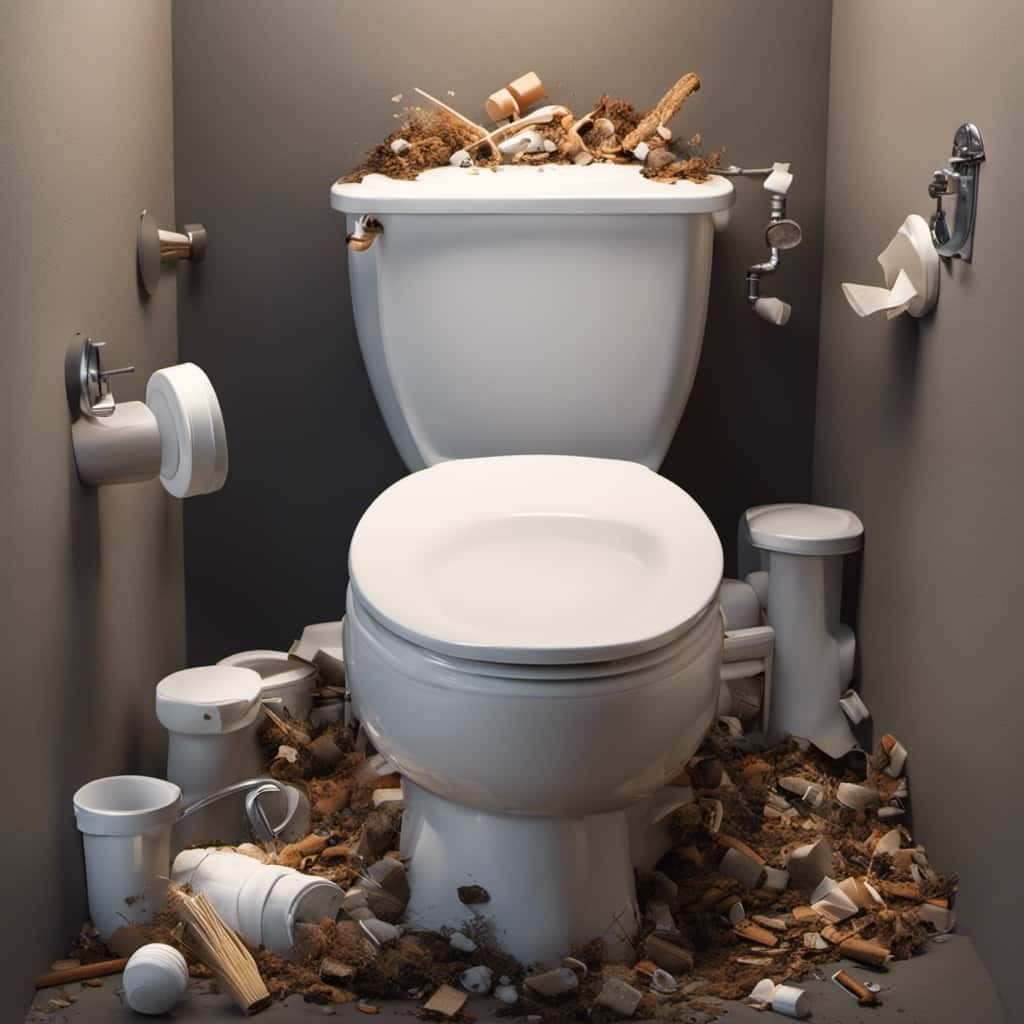
The primary purpose of a water softener is to remove minerals such as calcium and magnesium from the water supply. When water is used during the softening process, it can introduce additional minerals and contaminants into the system, reducing the efficiency of the softener and potentially causing clogs or damage.
Additionally, using water while the softener is running can disrupt the regeneration cycle, which is essential for maintaining optimal performance. Therefore, it’s crucial to avoid using water during the water softening process to ensure the longevity and effectiveness of your system.
Now, let’s explore whether it’s safe to use water during the softening process.
Is It Safe to Use Water During the Softening Process
It isn’t recommended to use water while the water softener is running. This is because the softening process involves the use of resin beads that remove hardness-causing minerals from the water. These resin beads need time to regenerate and recharge in order to continue effectively softening the water.
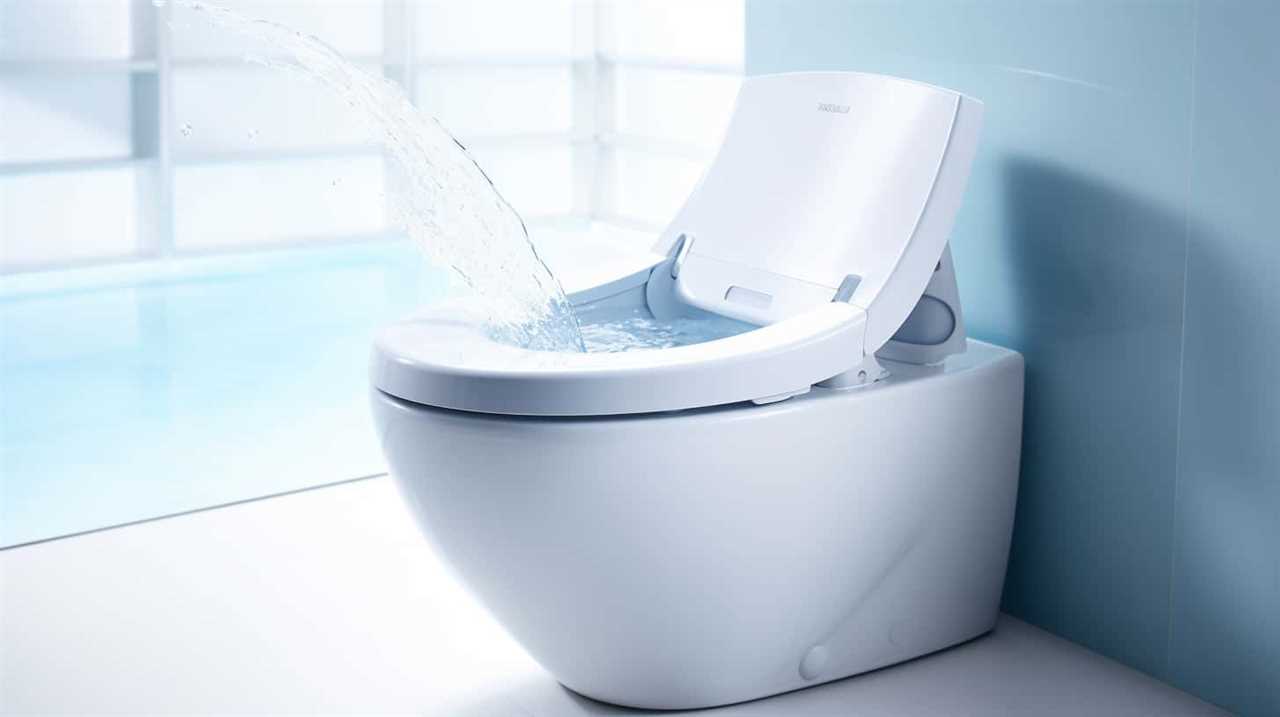
If water is used during this time, it can interrupt the regeneration process and result in hard water flowing through the system. Additionally, using water while the water softener is running can put additional strain on the system, potentially leading to decreased efficiency and increased maintenance requirements.
It’s advisable to wait until the regeneration process is complete before using water again to ensure optimal performance and longevity of the water softener. Regular maintenance of the water softener, including periodic regeneration and resin bed cleaning, is also crucial for its proper functioning.
Tips for Using Water While Your Water Softener Is Running
How can we effectively use water while our water softener is running?
It’s important to consider the impact of using water pressure during the operation of a water softener and to ensure proper water softener maintenance.

When using water while the water softener is running, it’s recommended to avoid high-pressure activities such as using power washers or running multiple appliances simultaneously. These activities can strain the water softener system and potentially cause damage.
Instead, it’s advisable to use water at a moderate pressure and to limit water usage during the regeneration cycle of the water softener.
Additionally, regular maintenance of the water softener, such as checking for salt levels and cleaning the resin tank, will help ensure optimal performance and extend the lifespan of the system.
Potential Issues to Be Aware of When Using Water With a Running Softener
We should be aware of potential issues when using water with a running water softener.

While water softeners are designed to remove minerals from water, there are still some potential concerns to keep in mind.
One potential issue is the increased need for maintenance. Using water while the softener is running can lead to more frequent regeneration cycles, which may require additional maintenance to ensure the system is functioning properly.
Another concern is the possibility of reduced water pressure. The softening process can cause a slight drop in water pressure, especially if the system isn’t properly sized for the household’s needs.
It’s important to be aware of these potential issues and ensure proper maintenance requirements are met to avoid any problems when using water with a running water softener.

Best Practices for Optimal Performance of Your Water Softener System
To ensure the optimal performance of our water softener system, we should follow some best practices. Proper water conservation and regular water softener maintenance are key factors in maintaining the efficiency and longevity of the system.
Firstly, it’s important to be mindful of water usage. Conserving water not only helps the environment but also reduces the workload on the water softener. Avoid excessive water usage by fixing any leaks promptly and practicing efficient water management.
Secondly, regular maintenance is crucial. This includes routine checks for salt levels, cleaning the brine tank, and inspecting the system for any signs of damage or malfunction. Following the manufacturer’s guidelines for maintenance will ensure that the system operates optimally.
Frequently Asked Questions
Can I Drink the Softened Water While the Water Softener Is Running?
Yes, you can drink the softened water while the water softener is running. However, it is important to consider any potential health risks associated with drinking softened water, such as increased sodium levels.

Will Using Water During the Softening Process Damage My Appliances?
Using water while the water softener is running may not damage appliances. However, it may reduce the effectiveness of the softening process. The duration of the softening process depends on various factors, such as water hardness and the capacity of the softener.
Can I Use Hot Water While the Water Softener Is Running?
Yes, you can use hot water while the water softener is running. The softening process will continue to remove hardness minerals, ensuring the water is suitable for tasks such as laundry and bathing.
Will Using Water During the Softening Process Affect the Effectiveness of the Water Softener?
Using water during the softening process does not impact the effectiveness of the water softener. It may temporarily affect water quality due to the flushing out of minerals, but this is normal and will improve over time.
What Should I Do if I Experience a Decrease in Water Pressure While the Water Softener Is Running?
Handling low water pressure during water softener operation is crucial. To troubleshoot pressure issues, check if the bypass valve is open, inspect the brine tank for salt levels, and ensure the system is properly sized for your needs.

Conclusion
In conclusion, it’s safe to use water while your water softener is running. However, it’s important to be aware of potential issues that may arise, such as reduced water pressure or temporary hardness in the water.
By following best practices and using water in moderation, you can ensure optimal performance of your water softener system and enjoy the benefits of softened water.
Imagine a smooth flow of water, free from mineral buildup, cascading down and rejuvenating your senses.
With an impeccable eye for detail and a passion for bathroom-related, Ava leads our editorial team gracefully and precisely.
Under her guidance, Best Modern Toilet has flourished as the go-to resource for modern bathroom enthusiasts. In her free time, you might find Ava exploring antique shops and looking for vintage bathroom fixtures to add to her collection.
-

 Bathroom Enhancements2 months ago
Bathroom Enhancements2 months agoWill Hot Bath Lower Blood Pressure
-

 FAQ - Advanced Bathroom Queries3 months ago
FAQ - Advanced Bathroom Queries3 months agoWhich Countries Use Bidets the Most
-

 Reviews1 month ago
Reviews1 month agoLDian Smart Toilet Review [2024]
-

 Reviews2 months ago
Reviews2 months agoKohler Innate Smart Toilet Review [2024]
-
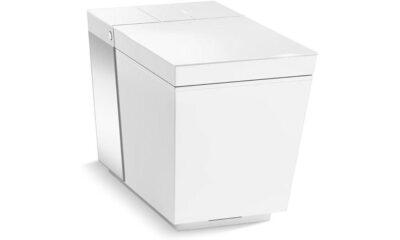
 Reviews2 months ago
Reviews2 months agoKohler NUMI 2.0 Smart Toilet Review [2024]
-
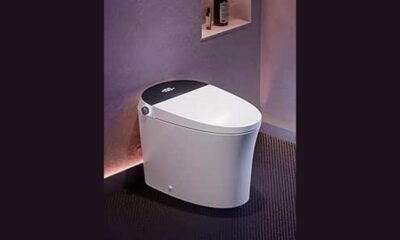
 Reviews2 months ago
Reviews2 months agoCANEST Smart Toilet Review: The Ultimate Bathroom Upgrade [2024]
-

 Toilet Types3 months ago
Toilet Types3 months agoAre Bleach Tablets Bad for Your Toilet
-
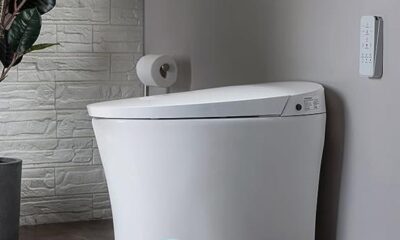
 Reviews2 months ago
Reviews2 months agoWoodbridge B0970S Smart Bidet Toilet Review [2024]
